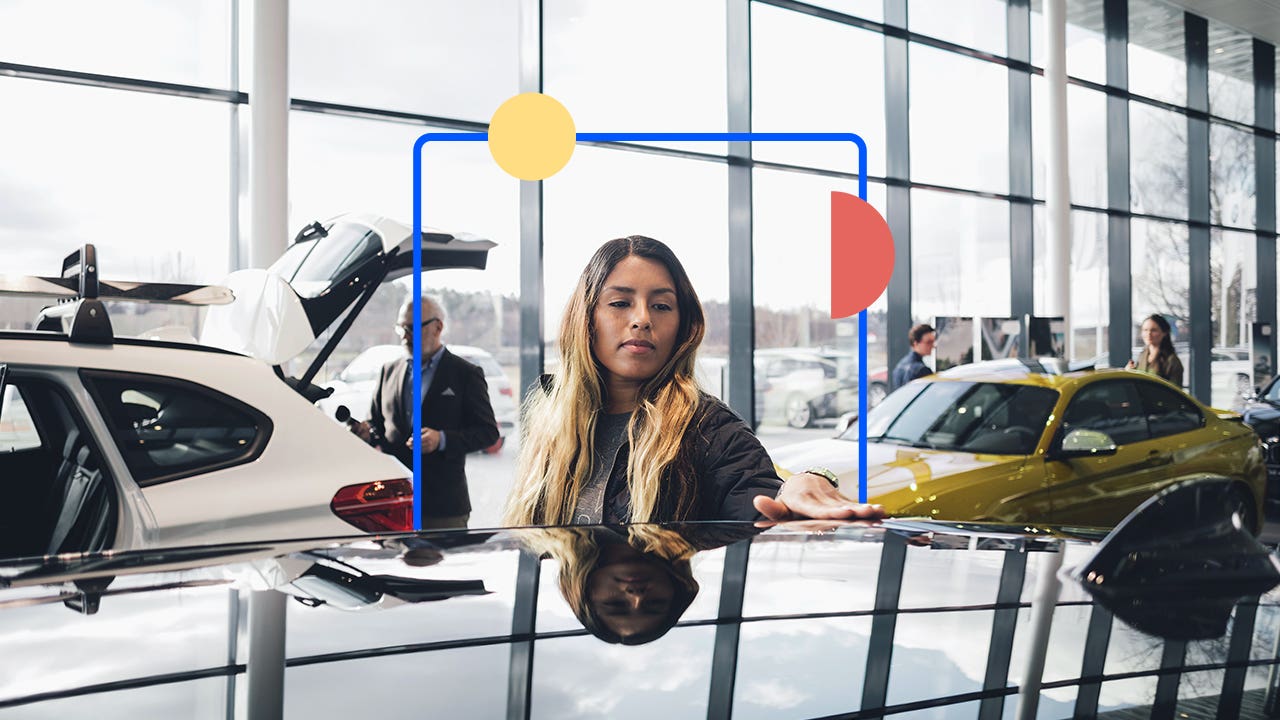How to choose a car you’ll love

Key takeaways
- With a variety of makes, models, sizes, styles and price points on the market, there is no one car that will best suit every driver.
- Evaluate how you’ll be using your vehicle when you choose which factors are most important to consider, like fuel economy or towing capacity.
- In some cases, the decision will come down to a financial one, but make sure you take a test drive before committing to a vehicle.
With thousands of car options available, there’s no one best car for everyone, but there is a best one for you. How to choose a car ultimately comes down to your needs and your budget. Because there are so many makes and models, know your budget, understand your buying options and research before setting foot on a car lot or committing to a purchase online.
How to find the best car for you
A car is a significant investment — one that many people commit to paying off over the course of several years. To ensure that you leave the dealership satisfied with your choice, ask yourself these questions first.
1. What’s your budget?
Determine how much money you’re willing to spend — both on a monthly basis and overall.
Consider the true cost of owning the car, including the expected maintenance costs, fuel and insurance in addition to the monthly loan or lease payment. Resources like Edmunds can help you estimate how much these items will cost over a five-year period.
You can also use an auto loan calculator to see how different rates and repayment terms will affect your monthly payment and the total interest you’ll pay.
Your total vehicle expenses — including monthly payment, fuel, maintenance and insurance — should not exceed 20 percent of your take-home pay each month. Consider these costs to figure out how much car you can afford.
2. Who’s driving?
The primary drivers of the car should have some stake in the discussion. Some prefer a larger vehicle that sits high, provides additional visibility and may boast additional safety features. Others are more comfortable driving a compact vehicle that navigates with precision and fits comfortably into parking spaces.
If you’re a parent buying a car for your teenager to use, a sports car or luxury vehicle probably isn’t the best choice, given that younger drivers carry higher risks of getting in an accident. If you have a large family or will be sharing carpooling duties to and from school or soccer practice, you’ll want to consider a vehicle with more seats and storage.
3. What’s the primary use?
Fuel efficiency and cabin comfort should be major considerations if your car will mainly be used for commuting to and from work. Conversely, if you’re using the vehicle to haul or tow cargo, you may need to focus more on stability and pull power.
Go to the dealership and sit in the car before you buy it. Take the time to adjust the seat and the climate control system to see if it’s a comfortable fit. If you live in a cold region, test driving on a cold day is a good way to see how quickly the windows defrost or the vehicle warms up.
Think about where you will be driving, what you will be taking with you and how long your typical drive will be. For long road trips or drives where you are expecting rough terrain, research models that can handle wear and tear. Likewise, a smaller vehicle might be better if most of your drives are on narrow city streets.
4. How much horsepower do you need?
Horsepower is a unit of measurement that gauges the energy output of your vehicle’s engine. Common engine types for passenger cars include four-cylinder and six-cylinder options, each with their own pros and cons.
For most drivers, a four-cylinder car is both reliable and fuel efficient. You will also spend less on maintenance and auto insurance costs. But if you love performance driving or have to accelerate rapidly onto crowded freeways, a four-cylinder car may disappoint you.
5. Do you need to tow or haul frequently?
If you need a vehicle capable of towing a boat or RV, you may need to think big. Many small cars simply don’t have the horsepower, transmission and frame to handle the demands. Even some small SUVs aren’t up to the task, so check the vehicle’s towing capacity and payload capacity. You may want to consider a pickup truck designed for towing.
If you plan to purchase a larger vehicle for hauling equipment, check if it will fit in your garage. This is a step many drivers forget, but some SUVs, trucks and vans are either too wide or too tall for many garages. Make sure to measure before you buy.
6. Is fuel economy important to you?
Before signing off on a new car, consider how much you are willing to pay and how frequently you’ll need to stop at the gas pump. Economy cars and hatchbacks usually get the best mileage, especially if they are electric or hybrid models. A luxury vehicle will likely require premium gas, which tends to cost more than regular or midgrade fuel.
Either way, if gas stations are sparse in your area or inconvenient to your regular travel, you may wish to consider a vehicle with a larger fuel tank. Check the fuel economy before committing to a car. Though hybrid vehicles often fetch better gas mileage, driving habits and the age of a vehicle can impact this attractive feature over time.
7. How long do you plan to use it?
Some vehicles depreciate more quickly than others. Look at car guides and check Kelley Blue Book or Edmunds to see what holds its value. This is especially important if you go through cars quickly: You’ll get a much better deal on a trade-in with a car that doesn’t lose much value in its first five years.
Some cars simply last longer, too. Subarus, Toyotas, Fords and Hondas are all known for their longevity, so they’re good starting points if you’re planning to keep your car for 100,000 miles or more.
Cars depreciate (decrease) in value over time — some more quickly than others. New cars depreciate more steeply than older models. Contributing factors include mileage, age, efficiency, condition and perceived value. Understanding how depreciation impacts your vehicle’s value can help you to make the right choice in the first place.
8. Do you want to lease or buy?
Leasing and buying a car carry different financial implications. Leasing is a good option if you want the newest vehicle available without paying as much each month, but you won’t recoup the amount you spend by trading in your car at the end of the lease. Additionally, you’ll have to keep a close eye on the condition and cleanliness of your vehicle, and you may have to contend with mileage caps.
Buying your vehicle places you fully in control, and you won’t have to worry about any mileage restrictions. The downside is that you typically need to keep the car for longer than you would with a lease in order to make the investment worth it. Monthly payments will likely be higher too, even if you shop for the best auto loan rates. And as a car’s owner, you will typically be responsible for more maintenance costs.
9. How was the test drive?
Find out as much as you can during the test drive of a vehicle. Evaluate how it handles on highways and city streets, whether you’re comfortable in the cabin and how road noise levels and sight lines are. Also experiment to find out if technology features (for instance, Bluetooth capabilities) are intuitive and easy to use for you.
Consumer Reports recommends creating a checklist of priorities to use when test driving. It may also be worthwhile to bring a friend or family member who can provide a second opinion on the experience. After your test drive, take the time and space you need to make a thoughtful decision.
The bottom line
The key to driving out of the dealership satisfied with your new vehicle is preparation. Decide what’s important to you before you pick a car. Style may be more important than size, and fuel economy may be more important than seating. Each factor has its pros and cons, so do your research to find the car that will suit your needs for years to come.
You may also like

Best value cars and SUVs in 2023

The best used cars for teen drivers

What to know when buying a car



